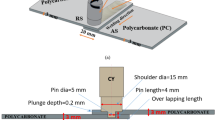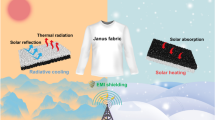Abstract
Air permeability is one of the important properties of conventional as well as technical fabrics such as protective garments, filters, and fabrics for airbags and parachutes. In case of surgical textiles, air permeability is an effective measure of thermo-physiological comfort. This study is aimed to analyze PES barrier fabrics and to develop correlation between permeability and influential material, construction and process parameters. Not only the individual effects of yarn, fabric and loom parameters but also the underlying complex interactions between fewer or several of these influencing factors exert significant influence on fabric porosity and permeability. Artificial neural network (ANN) is the suitable tool to map such complex input-output relationships, since a direct analytical solution is not possible. Feedforward neural network models were trained with combination of Levenberg-Marquardt algorithm and Bayesian regularization support incorporated in backpropagation. Based on the number of input variables, three ANN models were optimized. It was observed that the model which was trained with all selected inputs delivered promising results on test data, i.e., R2=0.985 and mean absolute error of 1.8%. To eliminate any doubt of overfitting, 10 % cross-validation was also performed for selected final model. Furthermore, to investigate the relative importance of input variables in the optimized ANN model, the rank analysis was also carried out. Research outcomes reveal that ANN can be used to tailor barrier fabric permeability depending on the requirements quickly without trials and error by adjusting loom, fabric and yarn parameters.
Similar content being viewed by others
References
N. L. Belkin, Tech. Text. Int., 1, 22 (1993).
B. K. Behera and H. Arora, J. Ind. Text., 38, 205 (2009).
T. K. S. Wong, J. W. Y. Chung, Y. Li, W. F. Chan, P. T. Y. Ching, C. H. S. Lam, C. B. Chow, and W. H. Seto, Am. J. Infect. Control, 32, 90 (2004).
A. Pezzin, “Thermo-Physiological Comfort Modelling of Fabrics and Garments”, Politecnico di Torino, PhD Thesis, 2015.
M. Havlová, Fibres Text. East. Eur., 21, 84 (2013).
S. Backer, Text. Res. J., 21, 703 (1951).
E. Laourine and C. Cherif, Autex Res. J., 11, 31 (2011).
K. K. Leonas, Am. J. Infect. Control, 26, 495 (1998).
A. Das and S. M. Ishtiaque, J. Text. Apparel, Technol. Manag., 3, 1 (2004).
M. Kuhr, D. Aibibu, and C. Cherif, J. Ind. Text., 45, 853 (2016).
D. Aibibu, “Charakterisierung, Modellierung Und Optimierung Der Barriereeigenschaften von OP-Textilien”, Technische Universität Dresden, PhD Thesis, 2005.
H. K. Kaynak and O. Babaarslan in “Woven Fabr”, (H.-Y. Jeon Ed.), pp.155–178, Intech, 2011.
Z. Zupin, A. Hladnik, and K. Dimitrovski, Text. Res. J., 82, 117 (2012).
T. Wolters, Ph. D. Dissertation, RWTH Aachen, 2003.
B. K. Behera and M. P. Mani, Indian J. Fiber Text. Res., 32, 421 (2007).
Z. A. Malik, N. Haleem, M. H. Malik, and A. Tanwari, Fiber. Polym., 13, 1094 (2012).
F. S. Hänsch, T. Gries, and M. S. Amabile, Melliand Int., 10, 39 (2004).
B. K. Behera and Y. Goyal, J. Ind. Text., 39, 45 (2009).
N. Haleem, Z. A. Malik, M. H. Malik, T. Hussain, Q. Gillani, and A. Rehman, Fiber. Polym., 14, 1172 (2013).
M. Tokarska, Text. Res. J., 74, 1045 (2004).
A. Çay, S. Vassiliadis, M. Rangoussi, and I. Tarakçioglu, Int. J. Cloth. Sci. Technol., 19, 18 (2007).
F. Walz and J. Luibrand, Text. Prax., 2, 330 (1947).
S. Haykin, “Neural Networks: A Comprehensive Foundation”, Prentice Hall, 1999.
O. Nelles, “Nonlinear System Identification: From Classical Approaches to Neural Networks and Fuzzy Models”, 1st ed., Springer-Verlag Berlin Heidelberg, 2001.
M. T. Hagan and M. B. Menhaj, IEEE Trans. Neural Networks, 5, 989 (1994).
D. W. Marquardt, J. Soc. Ind. Appl. Math., 11, 431 (1963).
B. M. Wilamowski, S. Iplikci, O. Kaynak, and M. O. Efe, Proceedings. IJCNN’ 01. Int. Jt. Conf. Neural Networks, pp.1778–1782, 2001.
D. J. C. MacKay, Neural Comput., 4, 415 (1992).
S. K. Neogi, “Role of Yarn Tension in Weaving”, Woodhead Publishing India, 2015.
B. M. D. Dauda and M. P. U. Bandara, Indian J. Fibre Text. Res., 29, 339 (2004).
V. K. Midha, R. Vashisht, and V. Midha, Fash. Text., 1, 12 (2014).
P. K. Majumdar and A. Majumdar, Text. Res. J., 74, 652 (2004).
Author information
Authors and Affiliations
Corresponding author
Rights and permissions
About this article
Cite this article
Malik, S.A., Kocaman, R.T., Kaynak, H.K. et al. Analysis and prediction of air permeability of woven barrier fabrics with respect to material, fabric construction and process parameters. Fibers Polym 18, 2005–2017 (2017). https://doi.org/10.1007/s12221-017-7241-5
Received:
Revised:
Accepted:
Published:
Issue Date:
DOI: https://doi.org/10.1007/s12221-017-7241-5




